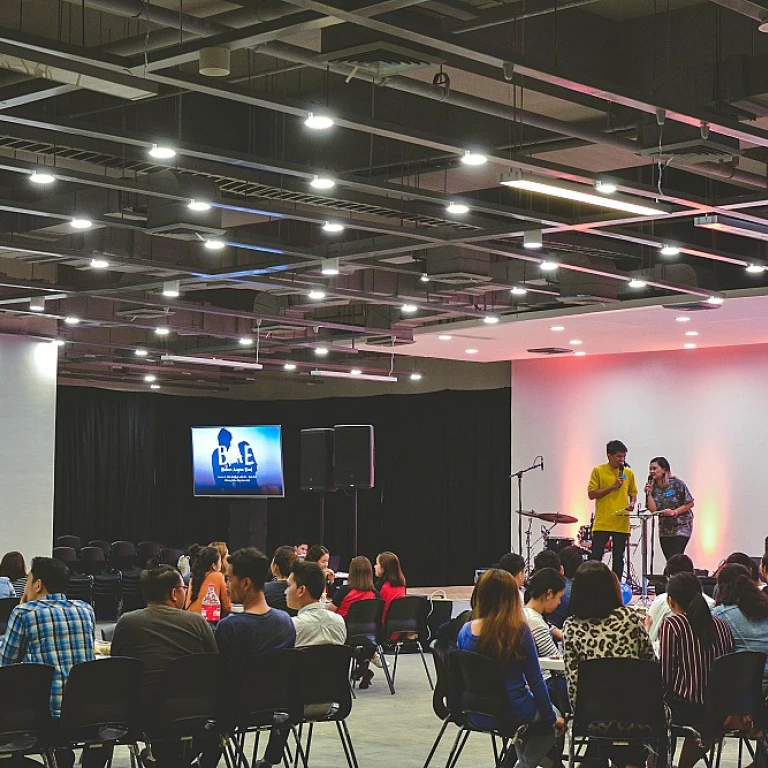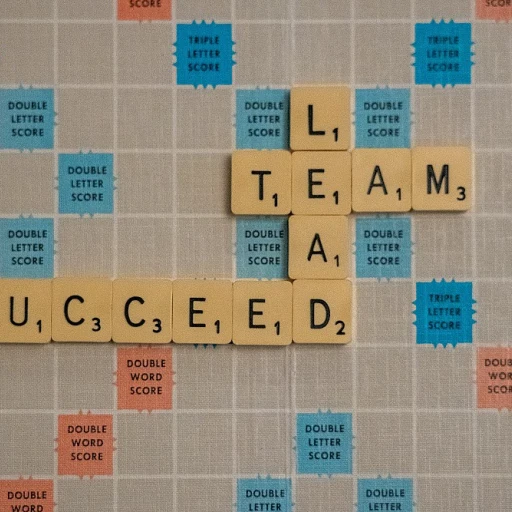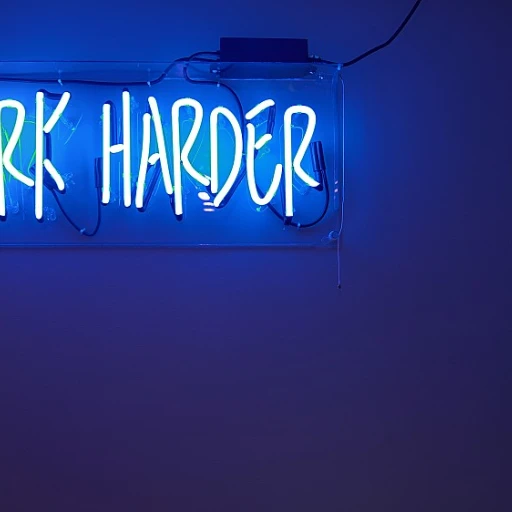Understanding Skil-It in Continuous Learning
The Essence of Continuous Learning with Skil-It
Continuous learning is a transformative approach that offers numerous tools and methodologies to bolster individual skills and expertise. Skil-It emerges as a pivotal product in this realm, enabling learners to enhance their proficiency through structured frameworks. As one navigates the landscape of continuous learning, the primary objective is to foster an environment where skills can be consistently updated to meet today's demands.
The underlying mechanism of Skil-It is akin to the effectiveness of maintaining a swimming pool. Just as effective water chemistry and products like algaecides combat resistant forms of algae, Skil-It combats the stagnation of skills by offering strategies that work great to keep knowledge fresh and relevant. This is particularly useful when faced with the challenge of retaining chlorine residual and preventing water bugs — or in the learning context, when overcoming hurdles that might affect the chemistry of one's knowledge base.
Moreover, in the continuous learning spectrum, the dexterity to filter through vast information is key—a dex skill, one might say. Skil-It provides a user-friendly interface that mimics the function of a swimming pool filter, ensuring learners can read and add pertinent information without overwhelming their cognitive pool. Additionally, reviews suggest that it is helpful in addressing common challenges in skill acquisition, with its effectiveness backed by positive customer reviews.
The analogy continues with the different factors that contribute to an optimal learning experience. Just as swimming pool plaster must be maintained to prevent stains, learners must adopt practices that ensure their skills remain sharp and pristine. Skil-It addresses this by providing strategies that are both robust and flexible, allowing adaptation to the rapidly changing landscape of knowledge demands.
One must consider how technology and products like Skil-It aid effective learning strategies. Instead of relying solely on traditional methods, this tool provides a modern approach to learning that aligns with market needs. For those interested in understanding more about practical learning strategies, exploring
effective learning strategies for continuous education could offer additional insights into harnessing Skil-It's full potential.
Challenges in Continuous Learning
Overcoming Hurdles in Acquiring New Expertise
Diving into continuous learning comes with its own set of challenges. Learners often face difficulties in balancing their current responsibilities with new areas of study. This juggling act is essential, particularly in rapidly evolving fields like pool maintenance and chemistry. Understanding the elements that can affect pool water and combat common resistant forms of algae, for instance, requires both basic skill and advanced knowledge of products such as algaecides and chlorine management.
Challenges manifest in different forms, including:
- Time management struggles, limiting the opportunity to add new skills.
- Access to quality learning resources that align with real-world applications, like swimming pool maintenance techniques.
- Gaining hands-on experience with credible, evidence-based learning products and methods.
Taking the time to read customer reviews of products like bio dex algaecide or dex skill applications can provide helpful insights, supporting practical learning beyond theory. Despite the vast ocean of information available, learners need to discern what truly works great to avoid tactics that can stain or harm pool plaster.
Strategies to overcome these hurdles focus on curated learning paths and expert feedback. Embarking on this journey requires understanding how liquid solutions like chlorine residuals or metallic-based products work effectively within a swimming pool filter system without causing an overreaction in chemistry water.
By enhancing professional development with continuous skill augmentation, we overcome the inertia of daunting initial steps. For more strategies on achieving a seamless integration of skill enhancement, explore our insights on continuous learning techniques.
Ultimately, prioritizing practical application and innovation ensures that learners maintain their competitive edge, whether managing a pool's algae issue or navigating complex resource material.
Strategies to Enhance Skil-It
Effective Methods to Foster Skil-It Growth
Continuous learning can be a challenging journey; however, employing the right strategies can greatly enhance one's ability to Skil-It. Users often face obstacles such as time constraints, motivation lapses, and the need for immediate applicability in their skill acquisition process. Here, we'll explore practical ways to overcome these hurdles and maximize learning potential.
- Consistent Practice: Consistency is vital in developing and retaining skills. Just like maintaining a swimming pool requires regular monitoring of chlorine and a balance of pool water chemistry to prevent resistant forms of algae, individuals must consistently practice new skills to reinforce learning.
- Learn from Feedback: Constructive reviews are akin to using customer reviews to choose the best pool algaecide or plaster products. Reflecting on feedback can guide learners on what areas need improvement and how they can optimize their learning strategies.
- Break Down Complex Skills: Much like a filter works systematically to maintain clean pool water, breaking down complex skills into manageable parts can make learning less overwhelming and more accessible.
- Embrace Technology: Utilize dex skills and technological tools, such as skill-specific apps or virtual learning environments, to enhance and tailor learning experiences. These tools can offer great support, much like how bio dex products aid in achieving clearer pool water.
- Regular Assessment: Continuously evaluate progress to ensure that learning efforts retain their value, similar to maintaining the right chlorine residual level in a swimming pool to prevent algae formation. This also helps in detecting when current methods might affect chemistry negatively or when an add-on might be required.
- Peer Collaboration: Collaborate with others, as exchanging ideas and knowledge can provide fresh insights and reinforce learning, much like wasps play a role in maintaining ecological balance.
Empowering oneself through these methods is essential for Skil-It growth. For more detailed insights and guidance, check the comprehensive guide on
upskilling and reskilling strategies. By adopting these strategies, individuals can meet continuous learning challenges with resilience and success, ultimately unlocking their full potential.
The Role of Technology in Skil-It
Revolutionizing Continuous Learning with Technological Advancements
The landscape of continuous learning has been significantly altered by the rapid advancements in technology. Within this context, Skil-It emerges as a pivotal ally, harnessing the power of tech to foster skill development and proficiency.
One of the foremost technological contributions is the integration of sophisticated software applications that streamline learning processes. These applications function as reservoirs of knowledge, akin to a well-maintained swimming pool, where learners can dive in to explore an array of topics. The "water" in this context symbolizes the extensive information available at one's fingertips.
Moreover, technology facilitates adaptive learning, allowing Skil-It users to personalize their learning trajectory. This flexibility enhances skill acquisition, offering a tailored experience that aligns with individual learning styles. Think of it as adding "chlorine" to maintain the ideal learning environment, free of "bugs" or interruptions.
Furthermore, platforms leveraging AI are likened to "filters," sieving through vast data pools to deliver curated content that matches user preferences. This intelligent sorting mirrors how a swimming pool filter cleanses water, ensuring clarity and purity.
Technological tools often referenced in customer reviews include cloud-based systems that enable collaborative learning. They serve as "algaecides" by eradicating redundant or outdated content, ensuring a clean and engaging learning journey.
The emergence of virtual and augmented reality technologies marks another revolutionary step. They provide immersive experiences, much like keeping a "wasp" at bay while enjoying a dip in the pool — giving learners a distraction-free zone to hone their skills.
It's important to acknowledge the role of products like Bio-dex in enhancing the learning catalyst effect. These tools, akin to how functional epoxy plaster works in construction, aid in building robust skill sets, forming resistant skill foundations that are immune to obsolescence.
Emphasizing the purity of "water," advanced learning systems maintain a high "chlorine residual," ensuring the integrity of knowledge acquired. They protect against any "stain" that previous, less evolved systems might have left in past learning experiences.
Exploring these technological dimensions of Skil-It definitely influences the chemistry of continuous learning. As these innovations continue to evolve, they promise a seamless experience that genuinely "works great," shaping the future of education and skill development in the United States and beyond.
Case Studies: Success Stories of Skil-It
Real-World Examples of Skil-It Success
Skil-It, a driving force in continuous learning, has been applied successfully in various fields. It's not just a theory; it has been tested and reviewed in practical scenarios. Pool maintenance, for example, often encounters challenges with algae and water balance, making continuous learning and adaptation vital.
One case of Skil-It in action is a swimming pool maintenance company in the United States that faced common pool issues like algae growth and chlorine imbalance. By implementing skill algaecide products, they effectively managed algae, even resistant forms, enhancing pool water clarity. Continuous review of the products and customer feedback allowed them to adapt quickly, ensuring that the chemistry of the water was optimal and didn't affect plaster surfaces.
Their approach involved not only the regular addition of algaecide and other helpful products but also an understanding of pool add chemistry adjustments. They needed to maintain sufficient chlorine residuals to combat tough algae, ensuring the water remained clear and safe. Through strategic product application, they avoided stains caused by metallic-based algaecides.
On a broader scale, many organizations utilize Skil-It strategies for professional growth and customer satisfaction. By continuously reading reviews and adding to their knowledge pool, they adapt to changing environments efficiently.
These success stories underline the importance of adaptive learning. Retaining skills and incorporating new practices reflective of current technology trends, such as bio dex systems and alternative chlorine solutions, further support both individual and organizational growth. "Dex skill" is not just a buzzword; it’s a necessary journey towards mastering common resistant challenges.
In conclusion, Skil-It not only helps in managing tangible assets like swimming pools but also in developing a mindset that's resilient against change. As we move forward, recognizing and embracing the nuances of continuous learning will be essential for future success.
Future Trends in Continuous Learning
Emerging Trends Shaping Future Learning
As the landscape of continuous learning evolves, several emerging trends are set to shape its future. Key developments demonstrate the potential for transformative impacts on personal and professional growth, stressing the importance of adaptive strategies in learning processes.
The increasing integration of artificial intelligence and machine learning can enhance Skil-It dynamics, offering personalized learning experiences that align with individual preferences. By leveraging these technologies, learners can tailor their progression paths more effectively. Although it may work like chlorine to eliminate resistant forms of gaps in knowledge and skill, AI can significantly affect the chemistry of learning environments, providing insights akin to analytical reviews of pool chemicals in maintaining balanced chlorine residuals.
Remote and hybrid learning models continue to gain momentum, enabled by broader access to technology and changing workplace expectations. These models allow learners to add flexibility to their training, mirroring the adaptability seen in bio dex and other skill-based products in water treatment.
Moreover, the rise of micro-credentialing systems supports learners in gaining dex skills swiftly. Similar to algaecide concentrating on specific algae forms in pool water, these credentials target niche skills. This approach is particularly helpful in rapidly shifting job markets where such proficiency ensures that knowledge and skills are not just acquired but optimized for efficient application.
Finally, interdisciplinary learning is growing in prominence. The effective blending of diverse subjects adds depth to traditional education, much like combining algaecides with other treatments to eliminate both common and resistant algae forms. This holistic approach prepares learners to tackle complex challenges with innovative solutions.
As these trends impact continuous learning, individuals and organizations must remain proactive. Just as products are reviewed to improve swimming pool environments in the United States, continuous feedback loops and customer reviews enhance learning ecosystems, ensuring they work great for both personal and professional development.








